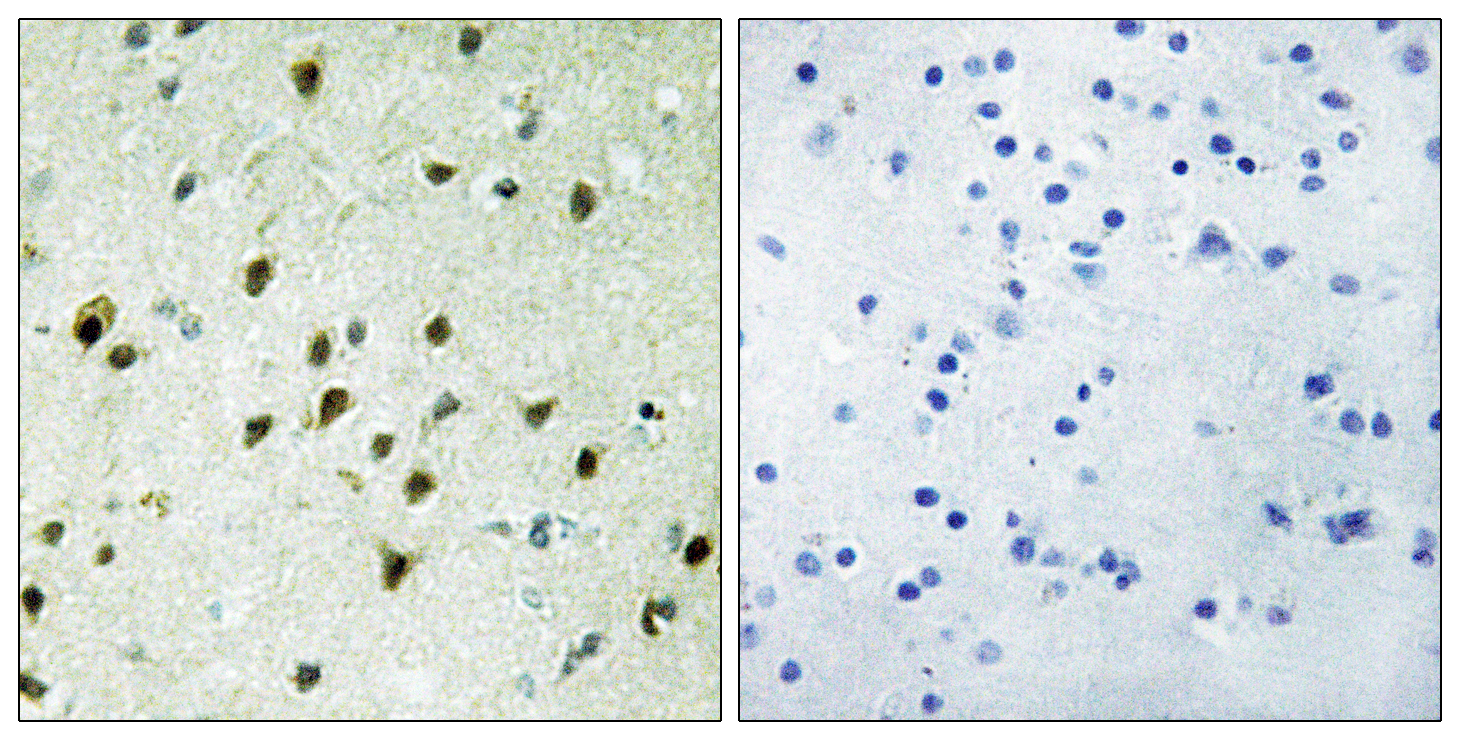Mad 4 Polyclonal Antibody
- 货号:YT2616
- 应用:IHC;IF;ELISA
- 种属:Human;Mouse
- 蛋白名称:
- Max dimerization protein 4
- 免疫原:
- The antiserum was produced against synthesized peptide derived from human MAD4. AA range:10-59
- 特异性:
- Mad 4 Polyclonal Antibody detects endogenous levels of Mad 4 protein.
- 组成:
- Liquid in PBS containing 50% glycerol, 0.5% BSA and 0.02% sodium azide.
- 来源:
- Polyclonal, Rabbit,IgG
- 稀释:
- IHC 1:100 - 1:300. ELISA: 1:10000.. IF 1:50-200
- 纯化工艺:
- The antibody was affinity-purified from rabbit antiserum by affinity-chromatography using epitope-specific immunogen.
- 储存:
- -15°C to -25°C/1 year(Do not lower than -25°C)
- 其他名称:
- MXD4;BHLHC12;MAD4;Max dimerization protein 4;Max dimerizer 4;Class C basic helix-loop-helix protein 12;bHLHc12;Max-associated protein 4;Max-interacting transcriptional repressor MAD4
- 背景:
- This gene is a member of the MAD gene family . The MAD genes encode basic helix-loop-helix-leucine zipper proteins that heterodimerize with MAX protein, forming a transcriptional repression complex. The MAD proteins compete for MAX binding with MYC, which heterodimerizes with MAX forming a transcriptional activation complex. Studies in rodents suggest that the MAD genes are tumor suppressors and contribute to the regulation of cell growth in differentiating tissues. [provided by RefSeq, Jul 2008],
- 功能:
- function:Transcriptional repressor. Binds with MAX to form a sequence-specific DNA-binding protein complex which recognizes the core sequence 5'-CAC[GA]TG-3'. Antagonizes MYC transcriptional activity by competing for MAX and suppresses MYC dependent cell transformation.,similarity:Contains 1 basic helix-loop-helix (bHLH) domain.,subunit:Efficient DNA binding requires dimerization with another bHLH protein. Binds DNA as a heterodimer with MAX. Interacts with SIN3A AND SIN3B. Interacts with RNF17.,
- 组织表达:
- Brain,Lung,Normal aorta,Spleen,

- Immunohistochemistry analysis of paraffin-embedded human brain tissue, using MAD4 Antibody. The picture on the right is blocked with the synthesized peptide.




